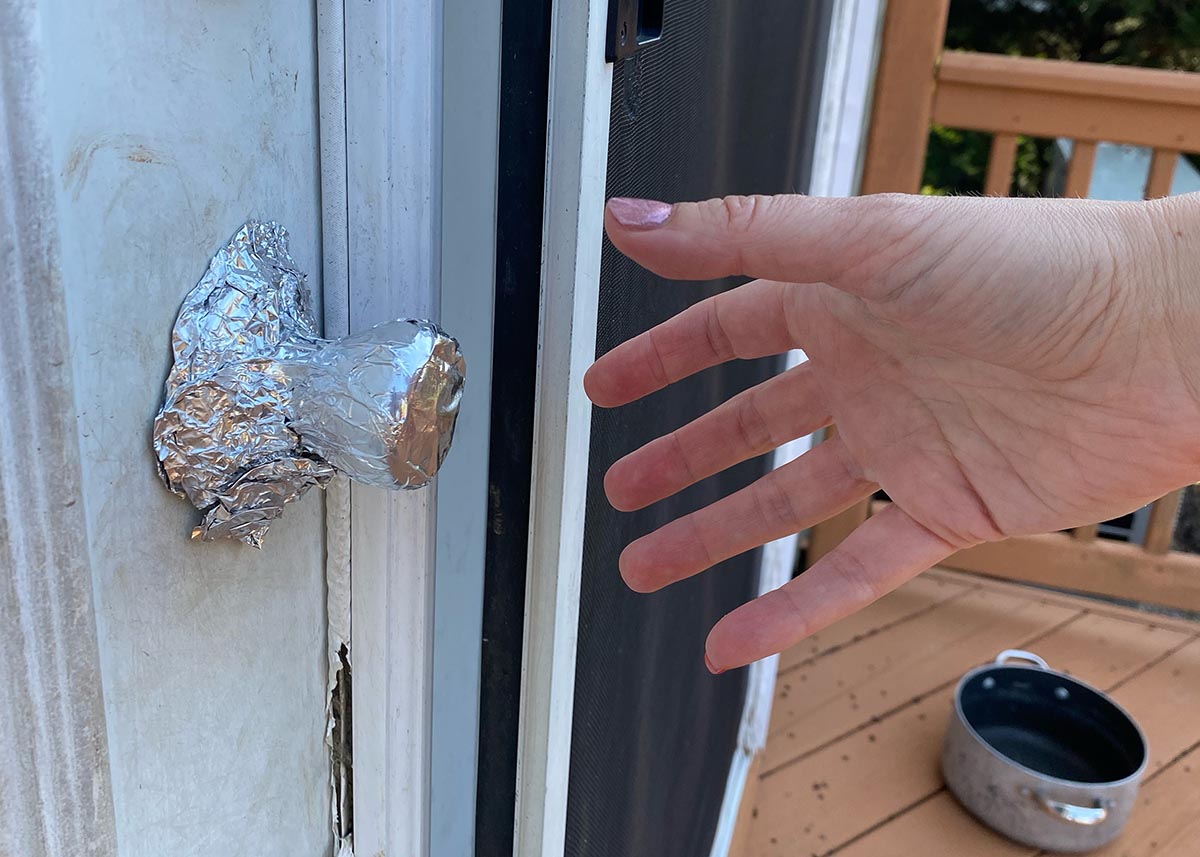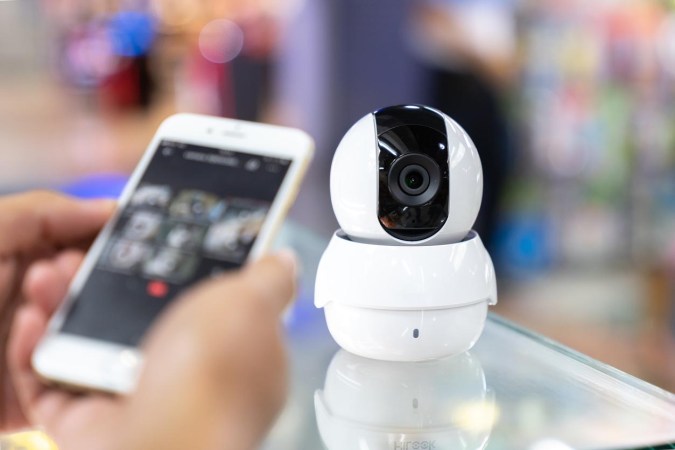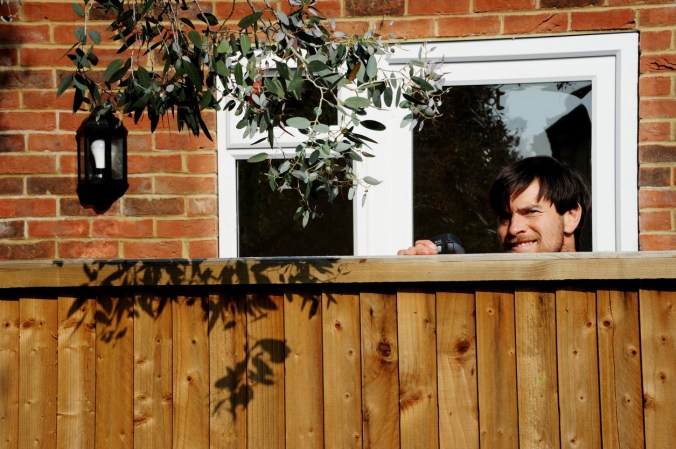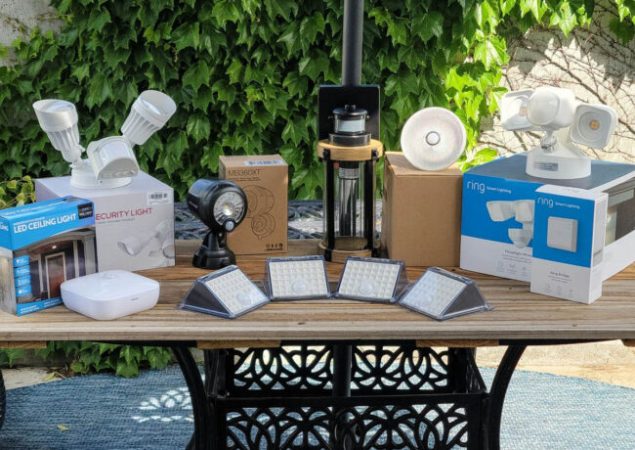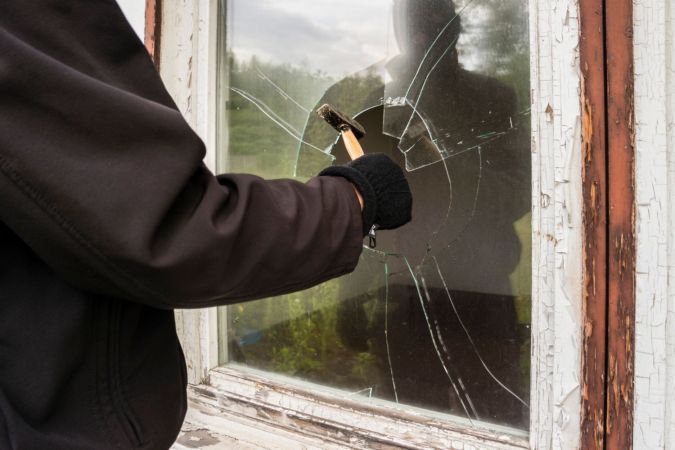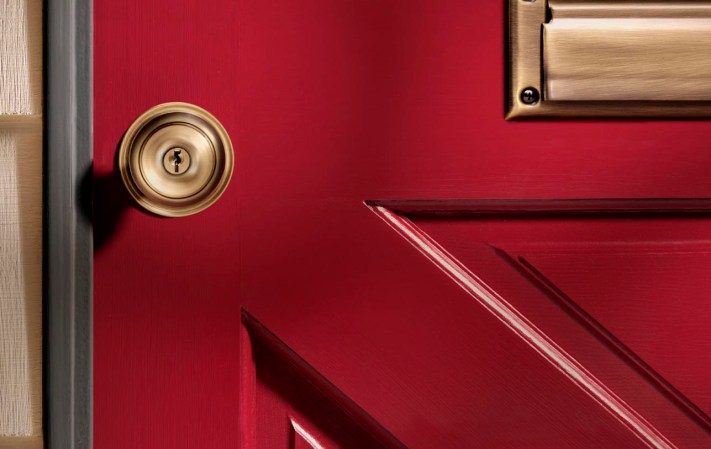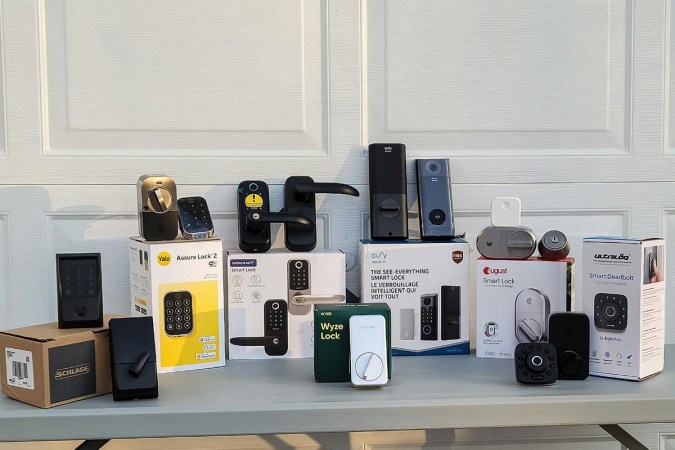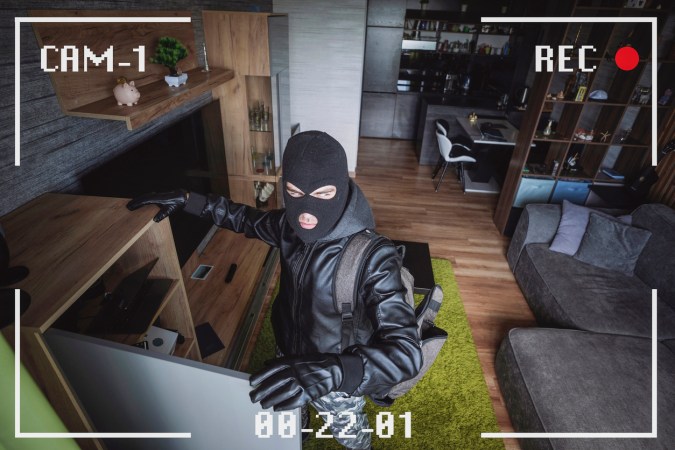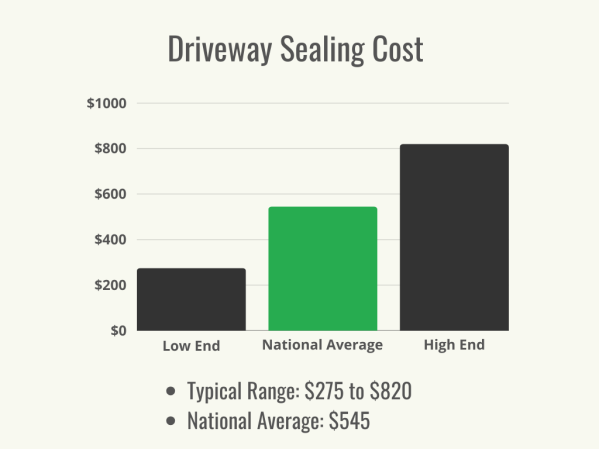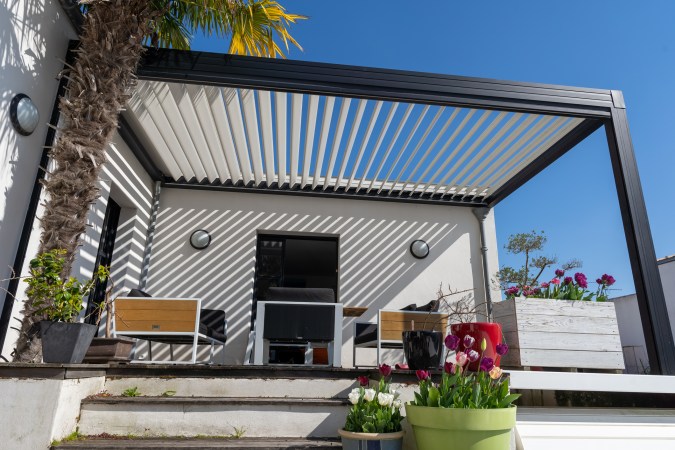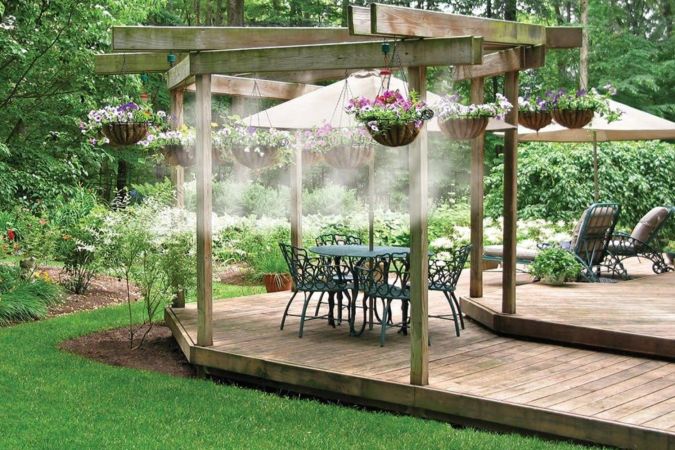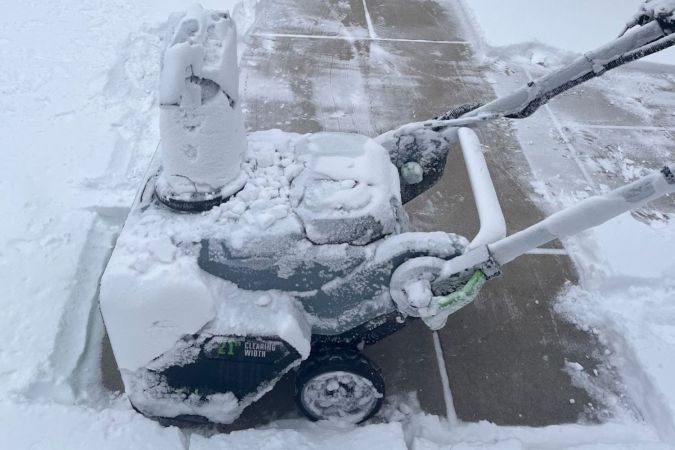We may earn revenue from the products available on this page and participate in affiliate programs. Learn More ›
The internet is full of hacks for just about anything, whether it’s using a hanging shoe organizer to store spices or removing pet hair from carpet with a squeegee. One of the more interesting hacks that’s been making the rounds online claims that you can prevent intruders from breaking into your home with nothing more than a sheet of regular aluminum foil. So, is it true? And where did this recommendation originate?
The technique involves wrapping foil around door knobs to make it harder for a thief to gain access to a home—though the reasoning behind this is a bit murky. The technique seems to have originated from an online advertisement rather than from home security safety experts, making it seem even more dubious. Further, if you click on the ad, you’d see that the hack is actually meant to help protect a door knob when the door is being painted rather than to prevent intruders. So why do people think tin foil on door knobs can help prevent break-ins?
Here’s an in-depth look at the foil-on-door-knobs myth, along with recommendations on home security hacks that actually work.
What is the aluminum foil method for deterring intruders?
If you’re curious about how to foil a burglar with foil, you can certainly try out this bizarre technique yourself—all you’ll need is a small piece of aluminum foil—but it’s ill-advised to rely on this for home security. The so-called aluminum foil hack entails wrapping a piece of foil around an exterior door knob.
The method directs you to wrap the foil around the door knob, ensuring it covers all portions and leaves none of the knob exposed. The aluminum foil on the door knob should be as smooth as possible while also ensuring it’s pushed tightly against the door knob. This technique works with most types of door locks that use a knob for access.
Let’s break down this home security myth step by step.
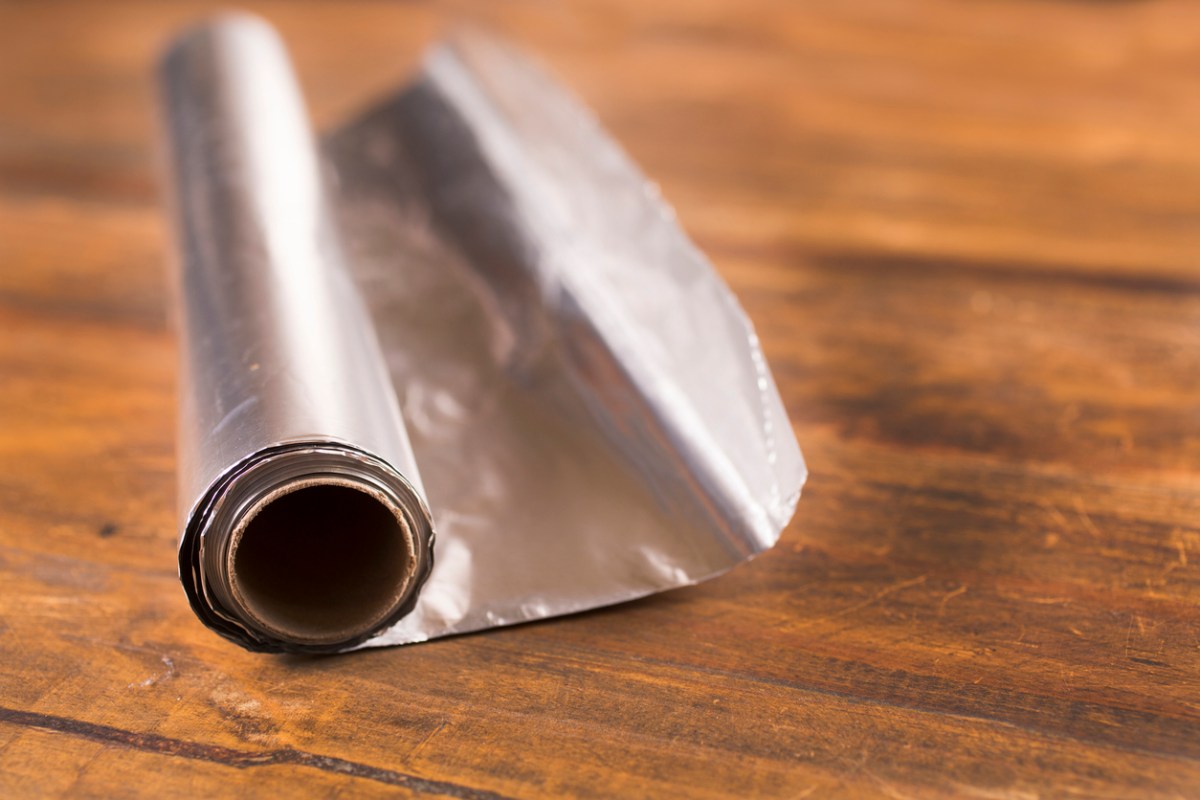
Myth #1: Broken foil on a door knob lets you know if someone tried to break into your home.
One of the reasons behind the idea of placing foil on the door knob is that it’ll be difficult for an intruder to turn the knob without breaking the aluminum foil. When you return home, you’ll see that the foil has ripped and instantly know that someone tried to break in.
However, this reasoning is flimsy at best. Foil isn’t indestructible and can rip for reasons other than someone trying to break into your home. There are much more reliable methods of determining whether an intruder has tried to enter your home, such as installing a doorbell camera.
Myth #2: Foil on a door knob makes it harder for intruders to turn the door knob.
The second myth about the foil hack is that the presence of aluminum foil on a door knob can make it more challenging for an intruder to pick the lock or turn the knob. Supposedly, when the door knob is covered in a protective layer of aluminum foil, a would-be intruder will get frustrated and give up.
Unfortunately, this isn’t as helpful as it seems—all it takes is a few seconds to remove even the most tightly wrapped foil. Once the foil is removed, there are no additional layers of protection for the lock, making it a poor alternative to traditional security methods. A sturdy deadbolt and a smart lock are much more likely to thwart an intruder than aluminum foil.
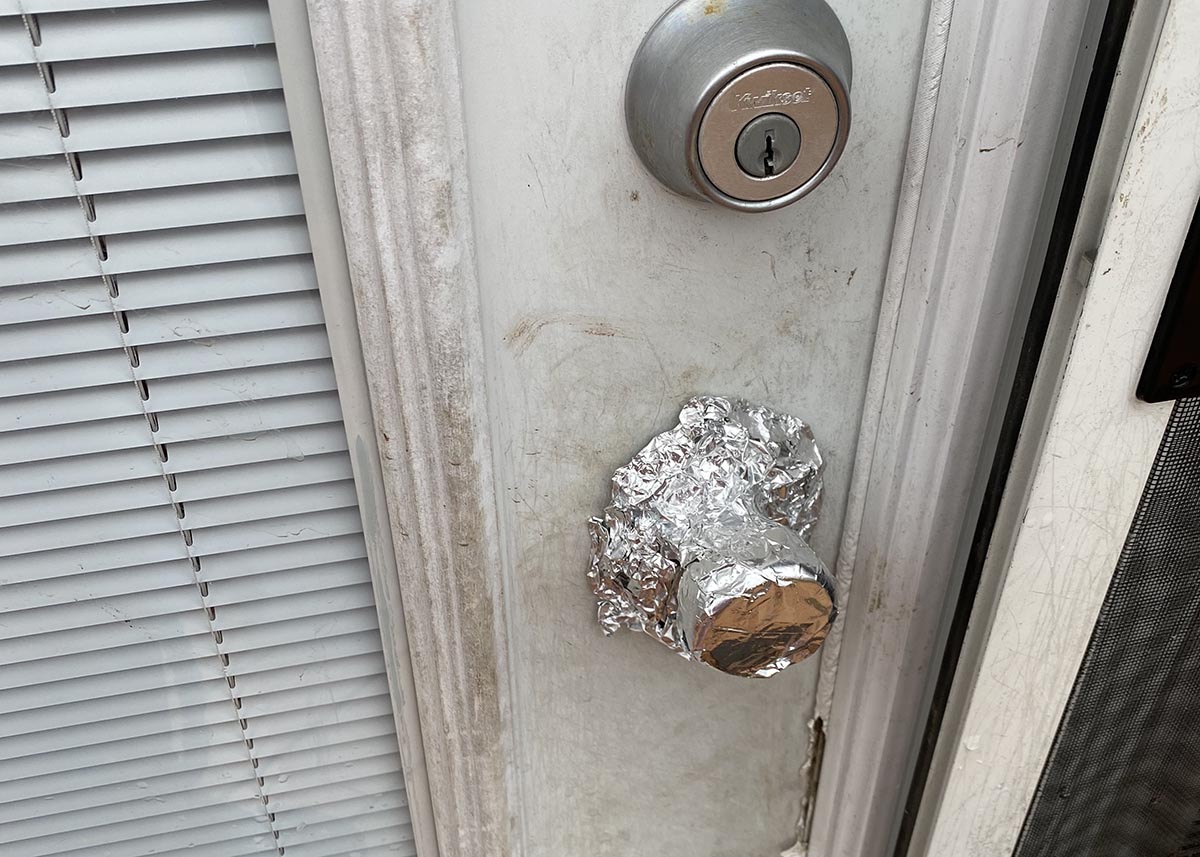
Myth #3: The sound of crinkling foil will alert you that someone is tinkering with your door knob.
The final myth is that the sound of crinkling foil will alert you to the fact that an intruder is trying to turn your door knob. When you hear the sound of crinkling foil, you can make a loud noise to scare the intruder or call the authorities to come and investigate.
The problem with this reasoning is that crinkling foil from the exterior of a door is only audible to people in rooms right next to the door—if you’re in the basement or upstairs, or if the TV volume is turned up, it’ll be nearly impossible to hear what’s happening outside the door. This makes the aluminum foil trick virtually pointless as a home security device, as its use is incredibly limited and not ideal for large or noisy homes.
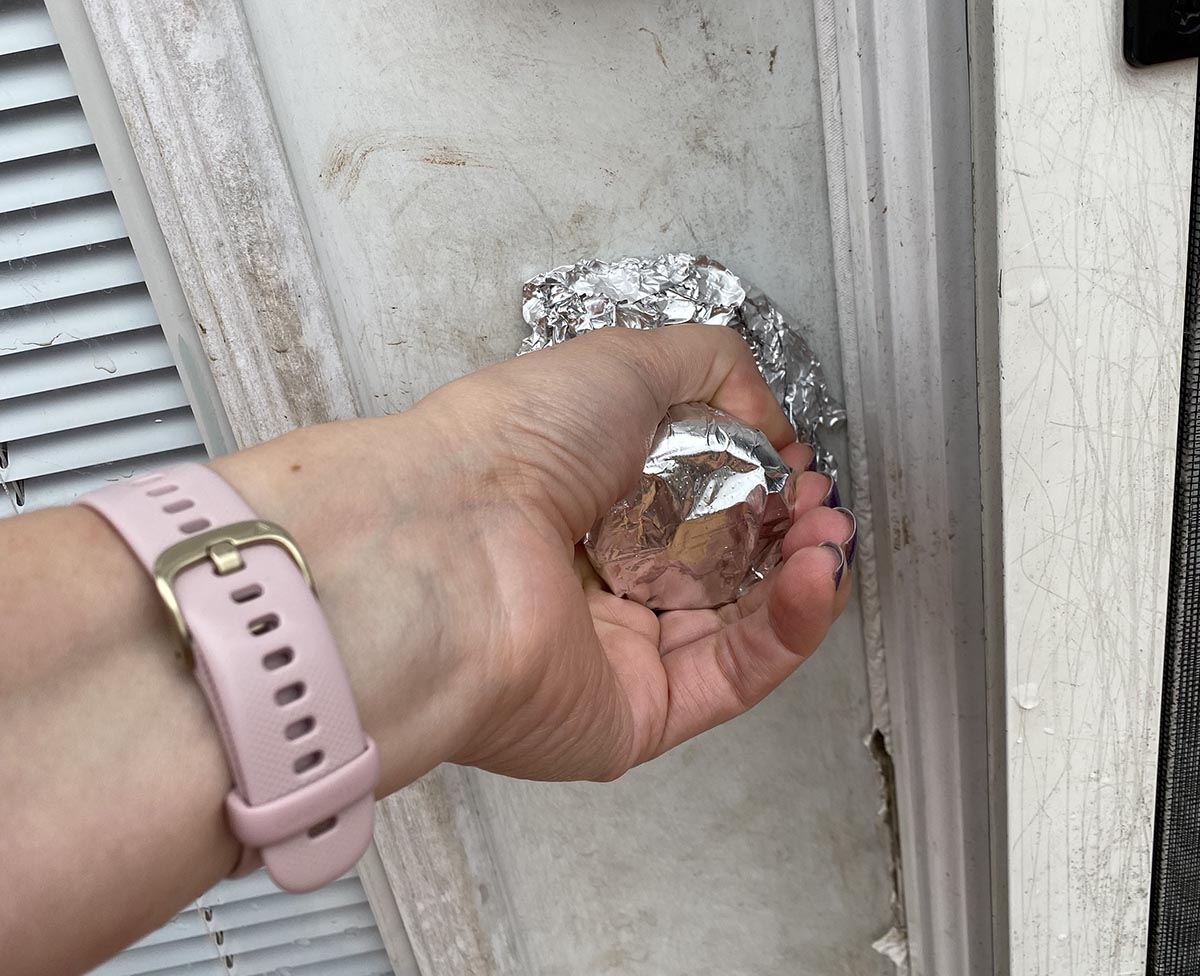
Foil might not deter burglars, but a comprehensive home security system can.
Although this technique won’t foil a burglar, there are several things that can be done around the home to increase security. The first step is to invest in one of the best home security systems, such as one from Vivint or ADT. These systems come in all shapes and sizes, making it easy to customize something for every budget and property. They typically also include professional monitoring. So instead of listening for crinkling foil, residents can rely on a professional dispatch service to contact emergency services upon an attempted break-in. Most systems include a variety of cameras and motion sensors, ensuring all corners of a home are protected.
There are a lot of things to look for in a home security camera system. Customers will need to decide whether to opt for professional monitoring, which products to include in their system, whether they can bundle additional products later on, and how much the installation will cost. Customers will also want to consider how many security cameras they need. If they don’t know this in advance, they might end up overpaying for extra products or getting a system that doesn’t provide adequate protection.
Frugal shoppers worried about home security costs may want to take a look at the best DIY security systems, such as those from SimpliSafe, as these tend to be much more affordable than professionally installed systems, yet offer many of the same benefits. DIY security systems require a bit more technical know-how to install, but most people will likely have no problem getting them up and running. Regardless of which is picked, home security systems are worthy additions to any home.
A doorbell camera lets you identify the person at your door before opening it.
If front door security is a concern, investing in a doorbell camera is a smart option. These devices let users see who is at their door before opening it. Doorbell cameras do two jobs in one: they work as both a doorbell and a security camera, making it easy to jump into a live feed of the front porch and ensure no one is tampering with the door.
Most video doorbells are powered by an accompanying mobile app, which lets customers optimize their performance. For example, it’s possible to set up motion zones that’ll automatically start recording if movement is detected. Many devices also let users set restricted zones. This ensures they don’t get unwanted notifications from movement on the street or in a neighbor’s yard.
Best of all, video doorbells are often relatively easy to install. Most work with existing wiring, while others are wireless models that can be placed anywhere and are perfect for customers who don’t have the most advanced DIY skills. Wired models can typically record 24/7, while wireless models only record when motion is detected (since these run on batteries, continuous recording would result in rapid battery drain). Both options are perfectly acceptable for home security, and they’re leagues better than foil on a door knob.
The Google Nest Doorbell is considered one of the best video doorbells on the market. It features 24/7 live streaming with night vision so the home’s residents can see who is at their door day or night. It also has a wide field of view and HD video resolution for a crisp image.
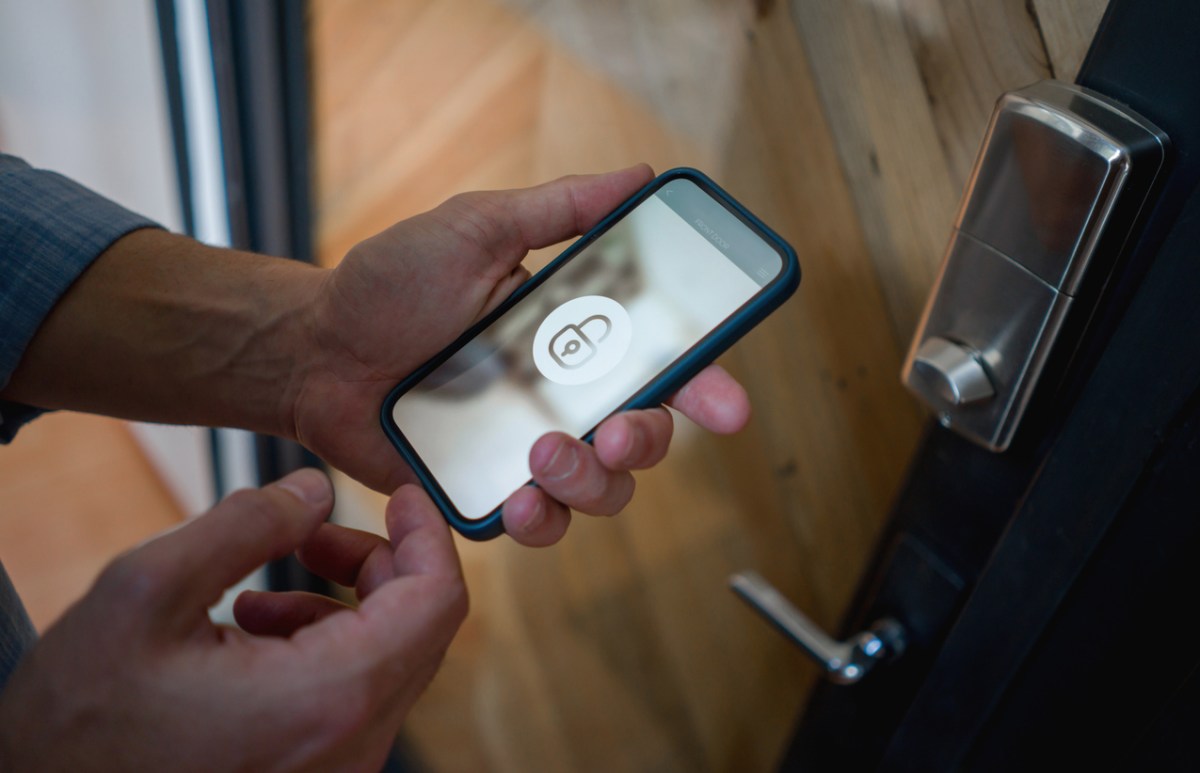
A home with neat landscaping and a well-lit exterior provides fewer places for intruders to hide.
Beyond adding security devices to a home, there are a few other things people can do to dissuade intruders from targeting their home. For one, they’ll want to keep both the front and back yard in good condition, as neat landscaping gives intruders fewer places to hide. If a home has clutter scattered around, it will be easier for burglars to duck out of sight. However, a yard that’s well landscaped and free of debris offers fewer ways to evade detection.
Just as important as landscaping is lighting. Motion-activated lights and floodlights can often scare off intruders, as the devices show intruders that they’re being watched. Floodlights are particularly powerful, as they can be customized to light up entire yards when movement is detected. Many can also start recording, giving users footage that can be shared with neighbors and the authorities. Customers will want to research how motion sensor lights work before installing them, as they could become a nuisance to neighbors if set up improperly.
Residents may also want to consider leaving their porch lights on at night or setting up smart lights for when they’re away from home. These can be programmed to turn on and off, suggesting to onlookers that the home is occupied. The best outdoor motion sensor lights, such as URPOWER Solar Lights, can shine a bright light on a would-be intruder and scare them off, while also alerting residents to their presence.
Upgraded door and window locks make it harder for intruders to enter the home.
Those who don’t mind a bit of DIY can look into upgrading their door and window locks. Deadbolts are a great addition to all front doors, as they add another layer of protection beyond a standard door knob. They’re also nearly impossible to pick, instead requiring brute force to break through—which makes a lot of noise—making deadbolt installation a great way to create burglar-proof doors.
Smart locks are another powerful option. They come in a variety of formats, and there are even models that require users to input a password or use a fingerprint scanner to gain entry rather than using a key. The Yale Assure Lock 2 is one of the best smart locks on the market. It’s available in a variety of styles, lets users check in remotely on its status (open or closed, locked or unlocked), and comes from a reliable brand that’s been producing locks for over 100 years.
As for windows, there are plenty of ways to secure windows without bars. For windows that open vertically, locks can be placed on top of the sliding window. For horizontal windows, there are locks that click onto the frame when pushed into place, ensuring no one can open them from outside. Depending on the setup, residents can also consider a security bar that wedges between the window and its frame, preventing it from moving.
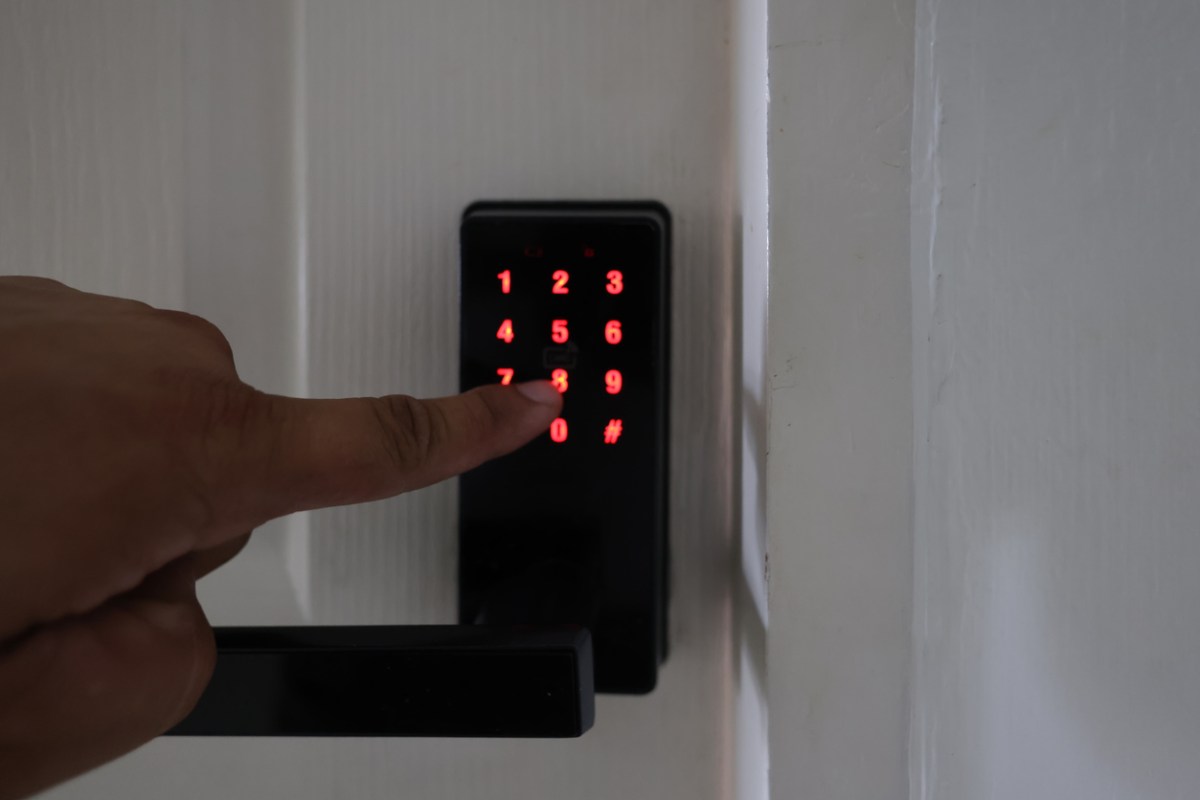
Entry sensors and motion detectors inside your home can alert you to the presence of a burglar.
Despite a resident’s best efforts, sometimes a determined intruder manages to bypass exterior security systems and get inside a home. In these instances, it’s useful to have entry sensors and motion detectors installed on entry points around the home. These sensors can alert residents that someone has entered the property. And if the devices are part of a professionally monitored system, the authorities can also be alerted.
Entry sensors are small devices that can be placed on both doors and windows. When the door or windows open, the sensor’s connection is broken, tripping the alarm. These devices are incredibly useful, as they’re often connected to a security system that’ll either record the event to show to authorities or trip an alarm that notifies a professional monitoring team. Depending on the home, certain types of window alarm sensors might be a better option than others, or homeowners might opt for a combination of contact sensors and glass-break sensors for optimal home security.
It’s a similar story for motion sensors. Instead of being attached to doors or windows, however, they can be placed almost anywhere in the home. Then, when motion is detected while the security system is armed, it’ll trigger an alarm. When used as part of a whole-home system, motion sensors make a great last line of defense. Homeowners can look into the best door and window alarms to find one that will suit their needs and their budget. The YoLink LoRa Smart Door Sensor Starter Kit is a budget-friendly option that is compatible with Amazon Alexa and Google Home.
Security cameras placed around the periphery of your home can act both as a deterrent and as a way to catch intruders on film.
One of the best things residents can add to their home is a robust suite of security cameras. When properly placed around the outside of a home, security cameras act as a powerful deterrent for criminals. Many intruders will think twice about attempting a break-in if they spot cameras on a property. There are several types of security cameras for customers to consider, but adding any of them to a property is better than having none installed. It’s important for residents to know where to place security cameras to capture all the main entrances to their homes. Security camera installation costs will vary by product, but opting for a DIY install is almost always cheaper than a professional install. However, to tackle this project themselves, residents will need to look up how to install security cameras and ensure they’ll have all the tools (and knowledge) necessary to complete the task.
If the presence of cameras isn’t enough to push away intruders, then they’ll at least capture the event for users to show to authorities. One of the best outdoor security cameras is the REOLINK RLK8-800B4 4K Security Camera System. This camera records in 4K resolution, allowing it to capture minute details and letting users zoom in to better see who is walking onto their property.
Placing a few of these cameras around a home is sure to catch the eyes of criminals. And a camera is a much better deterrent than a flimsy piece of foil will ever be.
